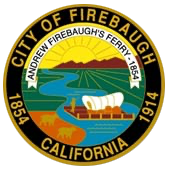Complete Streets: A design approach for streets that prioritize the safety, comfort, and experience of pedestrians and cyclists, in addition to motor vehicles.Multi-Modal Connectivity: A transportation framework that accommodates multiple modes of travel, including walking, biking, and driving, to improve access and mobility.Infill Development: The process of developing vacant or underused land within existing urban areas that are already developed, to promote more efficient use of space.Mixed-Use Development: Buildings or areas designed for a combination of residential, commercial, and other uses to promote a more integrated community.Charrette: An intensive planning session where community members, planners, and designers work together to develop ideas and solutions for a project.Walk Audit: A process where planners and community members walk through a neighborhood to assess walkability, safety, and potential improvements.Gateway Features: Design elements such as roundabouts, signage, and landscaping that mark the entry points into a city or district, improving both aesthetics and flow.Roundabouts: Circular intersections designed to improve traffic flow and safety by reducing speeds and eliminating stop signs or traffic lights.Project Advisory Group: A group of stakeholders and community members assembled to provide guidance and feedback on planning efforts, ensuring the project aligns with local needs.PAG: A group of stakeholders and community members assembled to provide guidance and feedback on planning efforts, ensuring the project aligns with local needs.Public Realm: The spaces and areas in a community that are open and accessible to the public, such as parks, streets, and plazas.Streetscape Improvements: Enhancements to the appearance and functionality of streets, including elements like sidewalks, lighting, trees, and furniture.Bicycle Lanes: Designated paths or lanes on roadways specifically for the use of bicycles to improve safety and promote cycling.Pedestrian-Scale Lighting: Street lighting designed to create a welcoming environment for pedestrians by providing adequate visibility and improving safety.Civic Uses: Facilities and services that serve the public, such as government buildings, libraries, and parks.
Summary
HideWhat’s Inside?
The Firebaugh Community Connectivity and Downtown Revitalization Study will guide the future growth of Firebaugh by identifying key areas to focus development efforts and create a vibrant downtown.
About the Project
Chapter 1
Community Vision for Downtown
Chapter 2
Downtown Vision for Urban Design and Connectivity
Chapter 3
Implementation Strategies
Chapter 4
AI Search
HidePowered by Konveio

Community Connectivity and Downtown Revitalization Study